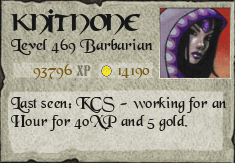Shetland sheep are a Primitive/Northern European short-tail breed probably brought to the Shetland Islands by the Vikings. They come in many natural colors, more than any other breed of sheep, and are the basis of the Shetland wool industry.
As a Primitive breed, Shetlands shed their wool annually, but are often sheared to suit our schedules. Shetlands may or may not be dual-coated. Their wool is soft and fine with a micron count of 12 to 20 for the undercoat, 30 to 40 for the outercoat (big difference), and an average staple length of 2 to 4.5 inches ("Knitter's Book of Wool"). My other reference book ("In Sheep's Clothing") gives slightly different stats: one micron count of 23 to 30, and a staple length up to 5 inches.
My sample came from light gray pre-washed fleece with an average staple length of three inches, give or take. I tried carding it but there was too much vm so I wound up combing it. This was several months ago, before I learned the virtues of flicking before hand carding.
I spun longdraw from badly carded rolags and better hand combed top for a 2ply yarn. As this was several months ago when I was learning longdraw, my singles were a bit uneven. Uneven or not, it made a nice light, soft yarn, and turned me into a Shetland lover.
The skein on the left is the Shetland. On the right is Friesian:

Friesian
Friesian sheep are a dual purpose (milk and wool) breed. They are one of the Northern European breeds originating in the Friesland-Netherlands/Germany region. Friesian sheep generally have a staple length of 4 to 6 inches, and a micron count of 29-33. [They are not listed in either of my reference books; breed info is from sheepusa.org/East_Friesian.]
My sample is from pre-washed fleece with a staple length of 3 to 4/4.5 inches. No luster. Some portions are a little crisp, but most seem to fall in the softer end of the micron count range. I hand combed the wool for my sample and spun worsted for a 2ply yarn.
This was easy to work with, both the spinning and the prep, and I would spin it again. In fact, I'm using the remainder of this (I started with eight ounces) as the base for a 3ply sock yarn. For the sock yarn, I am flicking the locks before combing and blending with flicked Border Leicester. I'm adding the Border Leicester to give the yarn some shine and also, hopefully, to add some strength to the yarn in lieu of nylon. Don't know if it will work, but it's an interesting experiment.




No comments:
Post a Comment